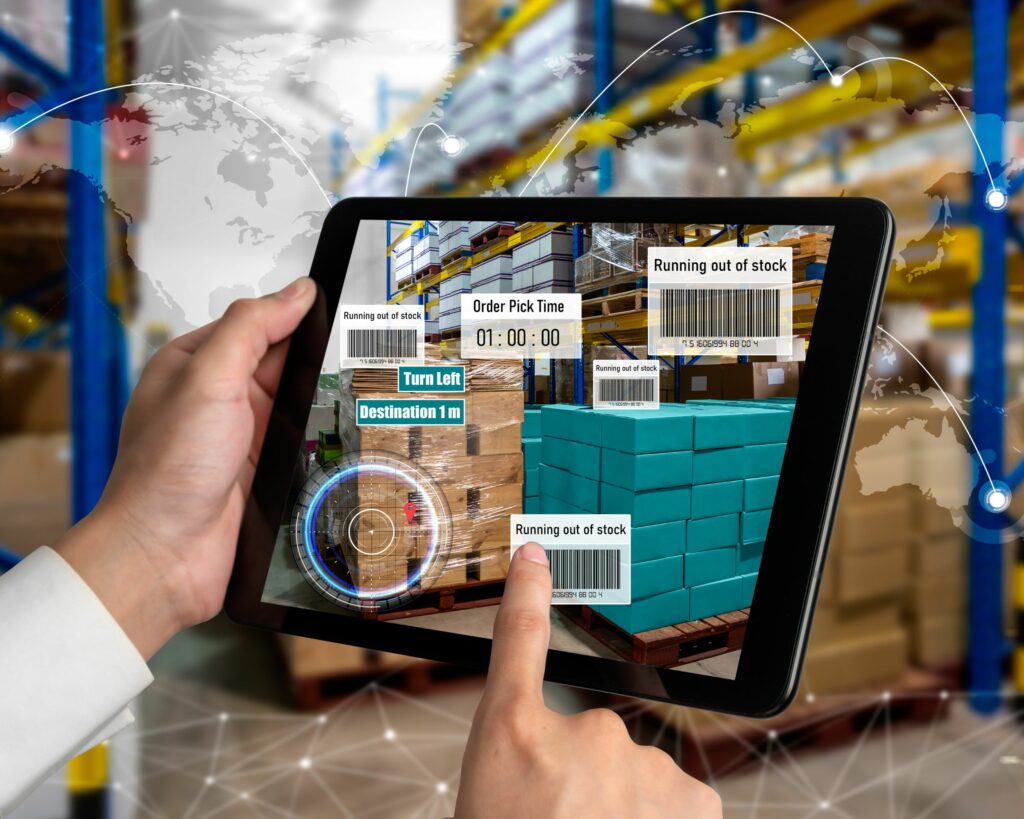Un TMS (Transport Management System) es un software de gestión de transporte que permite optimizar al máximo las operaciones logísticas, reduciendo costes a lo largo de toda la cadena de suministro y mejorando la experiencia de compra de los clientes.
Qué es un sistema TMS
Un Sistema de Gestión de Transporte (TMS) es una solución tecnológica para planificar, ejecutar y optimizar el proceso de expedición y reparto de mercancías. Permite conectar y orquestar toda la cadena logística, automatizando procesos manuales para una distribución más eficiente y rentable.
Se utiliza para planificar los movimientos de la carga, hacer la clasificación y la compra de la carga en todos los modos, seleccionar la ruta y el transportista adecuados, y gestionar las facturas y los pagos de la carga.
¿Qué empresas usan un sistema TMS?
En general, cualquier compañía que distribuya mercancías de manera regular puede ser usuaria de un sistema TMS. Desde fabricantes, distribuidores y organizaciones de comercio electrónico; hasta comercios mayoristas, minoristas y proveedores externos de logística.
Entre las industrias destacadas, podemos mencionar:
- Logística y reparto: con el crecimiento exponencial de las entregas de última milla, estos softwares de transporte son imprescindibles para aumentar la capacidad de entrega y tener una trazabilidad total del paquete, manteniendo a los destinatarios finales informados sobre el estado de la entrega.
- Retail: una de las ventajas de los TMS transporte es que permiten agilizar el proceso de expedición, reparto y entrega, integrando retailers y operadores logísticos en un mismo ecosistema en la nube, para poder gestionarlos eficientemente.
- Groceries: la distribución de productos alimentarios exige cumplir con regulaciones y estándares para garantizar una entrega adecuada. Gracias a la flexibilidad de los sistemas TMS, hoy es posible contar con soluciones adaptadas a los requisitos específicos de esta industria.
- Healthcare: las organizaciones sanitarias tampoco quedan fuera del alcance de estos sistemas de gestión de transporte que, con la digitalización y automatización de sus procesos, les permiten garantizar sus entregas críticas a tiempo, de manera transparente y respetuosa con la privacidad del cliente.
¿Cómo funciona el TMS?
Para que los usuarios puedan planificar, ejecutar, optimizar y rastrear envíos, el sistema de transporte (TMS) necesita estar integrado a otros sistemas del operador, como lo son el de gestión de pedidos (ERP) y el de gestión de almacenes (WMS).

Estos tres sistemas de Gestión de la Cadena de Suministro (SCM) cumplen diferentes funciones en el procesamiento de pedidos para poder gestionar su entrega a tiempo, de la manera más eficiente y rentable posible.
Básicamente, la operación integrada de estos tres sistemas funciona de la siguiente forma:
- Los pedidos ingresan automáticamente al sistema ERP que almacena toda la información contable y de facturación, y lleva la gestión de pedidos e inventario.
- El ERP alimenta la base de datos del TMS con la información necesaria para que pueda preparar y ejecutar el envío de esos pedidos (nombre y dirección del cliente, detalles del artículo).
- El WMS es la fuente de datos que permite coordinar las tareas de cumplimiento, envío y recepción en el almacén.
- A través del WMS, el sistema TMS se ocupa de la gestión de mercancías con el transportista, notificando al operador qué tiene que recoger, cuándo tiene que hacerlo y a dónde debe llevarlo.
- El TMS devuelve los detalles del envío para que el sistema ERP actualice su información de pedidos (número de seguimiento, nombre del transportista, costos).
- Una vez llevados los productos al almacén, la función del WMS es etiquetar correctamente ese stock y actualizar la información de inventario en el sistema ERP.
- Por último, el TMS transporte prepara la distribución de última milla, seleccionando las rutas más óptimas y proporcionando toda la información necesaria al repartidor para la entrega a tiempo de los pedidos al cliente.
En general, la información del envío también se integra a un sistema de gestión de relaciones con el cliente (CRM), por lo que paralelamente el comprador puede seguir el recorrido de su paquete y conocer el estado del envío, mejorando de esta manera su experiencia de compra.
Beneficios de un TMS
En un sector desprovisto de operadores con la tecnología adecuada, las soluciones TMS han venido a ocupar ese lugar vacío en la gestión de la cadena de suministro, transformando las operaciones y optimizando el reparto de mercancías de las empresas.
Los beneficios de contar con un Sistema de Gestión de Transporte son múltiples, entre los cuales podemos destacar:
- Optimiza las rutas de retiro y entregas
Gracias al software TMS, es posible calcular el recorrido más óptimo a realizar con las expediciones registradas, ahorrando tiempos y costes
- Mejora el flujo de caja
Un buen TMS transporte permitirá a las empresas reducir sus costos de envíos, brindándole la información que necesitan para optimizar gastos de traslado, como el combustible o las horas extras de los transportistas.
- Permite una planificación y ejecución integradas
Su fácil integración con sistemas de gestión ya existentes, posibilita una gestión unificada, ágil y efectiva de rutas y cargas.
- Reduce el papeleo
La digitalización y automatización de la operativa del negocio a través de este sistema de transporte, trae aparejada una reducción drástica de tiempos, gastos y errores en procesos administrativos como la facturación.
- Facilita la gestión de repartidores
Con un TMS es posible seleccionar las rutas más óptimas y asignar repartidores a cada ruta, teniendo en cuenta el volumen de expediciones registradas, el horario de los trabajadores y los recursos disponibles.
- Optimiza la gestión de inventarios
A través de un sistema TMS, los usuarios pueden rastrear el estado de sus pedidos y envíos en tiempo real. Esto permite controlar mejor el inventario, adecuando la demanda real de pedidos de manera más eficiente.
Conclusión
Aumenta exponencialmente el volumen de pedidos, el tamaño de los envíos es cada vez menor, el precio por entrega no deja de bajar y los consumidores son cada vez más demandantes.
En este panorama, contar con un Transport Management System (TMS) que ayude a las empresas a gestionar sus recursos de la manera más ágil, eficiente y rentable posible, se ha convertido en un activo clave del sector logístico para asegurar el crecimiento y la sostenibilidad de sus negocios.



